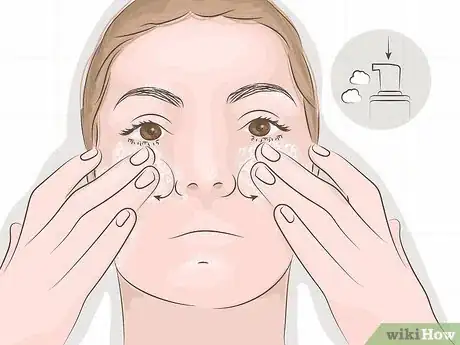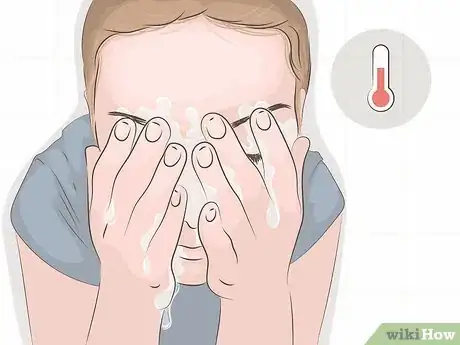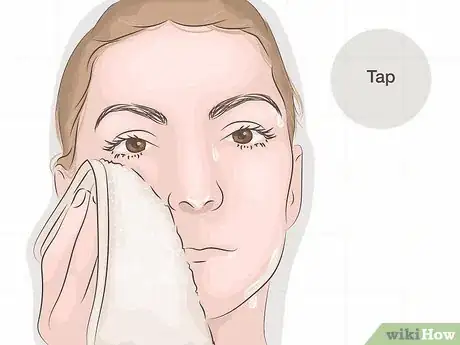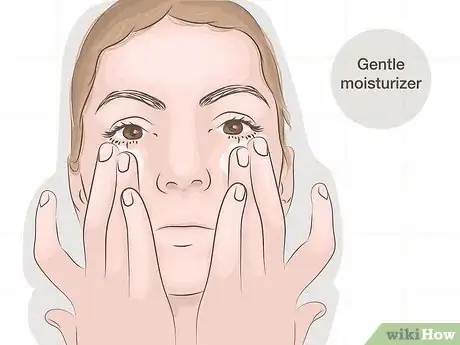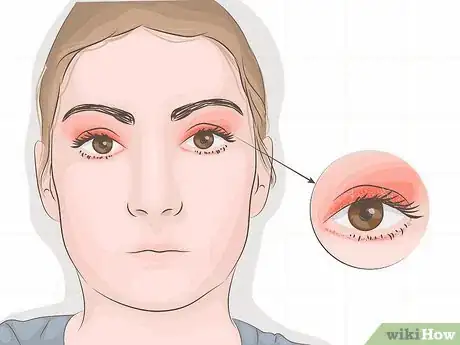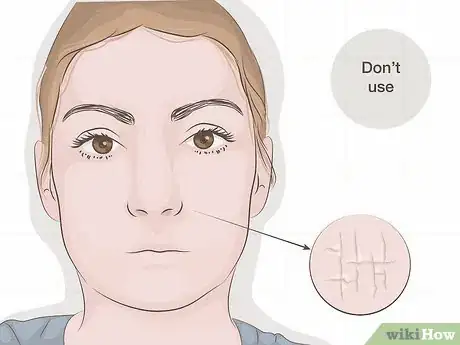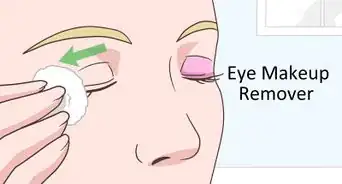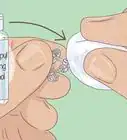This article was co-authored by Lydia Shedlofsky, DO. Dr. Lydia Shedlofsky is a Resident Dermatologist who joined Affiliated Dermatology in July of 2019 after completing a traditional rotating internship at Larkin Community Hospital in Miami, Florida. She earned a Bachelor of Science in Biology at Guilford College in Greensboro, North Carolina. After graduation, she moved to Beira, Mozambique, and worked as a research assistant and intern at a free clinic. She completed a Post-Baccalaureate program and subsequently earned a Master's Degree in Medical Education and a Doctorate of Osteopathic Medicine (DO) from the Lake Erie College of Osteopathic Medicine.
There are 8 references cited in this article, which can be found at the bottom of the page.
This article has been viewed 41,346 times.
Cleansing foams are deep-cleaning face washes that form a foamy, sudsy lather on your skin. While cleansing foams can be a bit too harsh for some skin types, they are a great option if you have oily, acne-prone skin. Washing your face with cleansing foam will remove excess dirt and oil from your face and keep your skin feeling fresh and clean. Before using a cleansing foam, however, it’s important that you determine if cleansing foam is the right type of face wash for your skin.
Steps
Washing Your Face with Cleansing Foam
-
1Wet your face with warm water. First, pull your hair back out of your face with a hair tie or headband. Turn on both the hot and cold water and let it run for a few seconds to heat up, adjusting as needed until the water is warm. Then, use your hands to splash water on your face.[1]
- Using water that is too hot is harsh and damaging to your skin, so make sure the water is comfortably warm.
-
2Massage 2 pumps of cleansing foam gently over your face. First, press down on the pump twice to dispense the cleansing foam into your hands. Then, gently massage the foam all over your face and neck in circular motion, avoiding your eyes.[2] [3] This will help cleanse your skin by removing any impurities while increasing circulation, which will promote cell growth.
- While it may be tempting to scrub the foam into your skin if you’re removing layers of makeup or sunscreen, doing so can irritate your skin. It may also push impurities deeper into your pores and make acne worse.[4]
Advertisement -
3Rinse the cleansing foam off completely with warm water. Once your face is completely lathered in foam, use your hands to splash water on your face to rinse the cleansing foam off. Make sure that you rinse thoroughly to remove any residual dirt or cleanser on your face, as this can clog your pores.[5]
-
4Pat your face dry with a clean towel. Using a fresh, clean towel, pat your face gently all over until it’s dry.[6] Avoid rubbing your skin with the towel, as this can irritate your skin and cause redness.[7]
- When drying your skin after using cleansing foam, always use a fresh, clean towel. Reusing a towel even once can transfer bacteria into your pores and cause breakouts, irritation, or even an infection.[8]
-
5Apply a gentle moisturizer to keep your skin from drying out. Even if you have oily, acne-prone skin, it’s important that you always follow a cleansing foam wash with moisturizer to restore your skin’s natural moisture.[9] This is particularly important if your cleansing foam contains sodium lauryl sulfate (as most do), which could dry out and irritate your skin if you don’t re-moisturize after use.[10]
Determining If Cleansing Foam Is Right for Your Skin
-
1Try a cleansing foam if your skin is oily and acne-prone. Cleansing foams tend to get rid of more excess oil in your skin than other types of face wash.[11] As a result, this type of cleanser is generally recommended for people with oily, acne-prone skin.
- Most cleansing foams contain an ingredient called sodium lauryl sulfate, which strips the oils out of your skin. While this can be irritating for many skin types, if you have very oily skin, it may work for you and leave your skin feeling clean and fresh.[12]
-
2Use a cleansing foam to remove heavy makeup or sunscreen. If you use any makeup or sunscreen products that are difficult to remove, using a cleansing foam could be a good option for you. Cleansing foams create a foamy lather that tends to be more effective at breaking down products and impurities on your skin than other types of face washes, making them easier to remove.[13]
- If you have sensitive or dry skin, you’ll likely want to only use a cleansing foam to remove heavy makeup and sunscreen and stick to a more gentle cleanser for everyday washes.
-
3Choose a moisturizing cleansing foam if your skin is sensitive. While most cleansing foams can be a bit too harsh for sensitive skin types, there are some products that are formulated with moisturizers. These moisturizing cleansing foams are a great option for people whose skin is prone to acne breakouts, yet sensitive and easily irritated. The foam formula will strip your skin of dirt and impurities, while the added moisturizes will keep your face from drying out.[14]
- When searching for a moisturizing cleansing foam, look for options that are labeled “non-soap” or “neutral pH.”[15]
-
4Avoid using a cleansing foam if your skin is very dry. Because cleansing foams are formulated to strip oils out of your skin, they generally aren’t recommended for people whose skin is already dry and sensitive. While it’s possible that a cleansing foam with added moisturizers could work for dry and sensitive skin, you’re likely better off trying out a different type of cleanser.[16]
- A hydrating cream cleanser might be a good option for you if a cleansing foam is too harsh for your skin.[17]
References
- ↑ https://www.instyle.com/beauty/how-choose-between-foam-cleanser-cream-cleanser-micellar-water-or-oil-cleanser
- ↑ Lydia Shedlofsky, DO. Dermatologist. Expert Interview. 3 May 2021.
- ↑ https://www.thehealthy.com/beauty/face-body-care/face-washing-mistakes/
- ↑ https://www.thehealthy.com/beauty/face-body-care/face-washing-mistakes/
- ↑ https://www.instyle.com/beauty/how-choose-between-foam-cleanser-cream-cleanser-micellar-water-or-oil-cleanser
- ↑ Lydia Shedlofsky, DO. Dermatologist. Expert Interview. 3 May 2021.
- ↑ https://www.instyle.com/beauty/how-choose-between-foam-cleanser-cream-cleanser-micellar-water-or-oil-cleanser
- ↑ https://www.marieclaire.com/beauty/news/a14238/washcloths-skin-effect/
- ↑ https://www.instyle.com/beauty/how-choose-between-foam-cleanser-cream-cleanser-micellar-water-or-oil-cleanser
- ↑ Lydia Shedlofsky, DO. Dermatologist. Expert Interview. 3 May 2021.
- ↑ https://fashionmagazine.com/beauty/best-face-wash-skin-type/
- ↑ https://www.allure.com/story/foaming-cleansers-irritates-skin
- ↑ https://fashionmagazine.com/beauty/best-face-wash-skin-type/
- ↑ https://www.instyle.com/beauty/how-choose-between-foam-cleanser-cream-cleanser-micellar-water-or-oil-cleanser
- ↑ https://www.allure.com/story/foaming-cleansers-irritates-skin
- ↑ https://www.instyle.com/beauty/how-choose-between-foam-cleanser-cream-cleanser-micellar-water-or-oil-cleanser
- ↑ https://www.cosmopolitan.com/style-beauty/beauty/g28870296/best-face-wash-for-dry-skin/
- ↑ https://theklog.co/difference-between-foaming-and-gel-cleansers/

